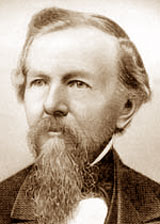The Christelijke Gereformeerde Kerk grew out of a secession from the Nederlandse Hervormde Kerk that began in in 1834.
Before the Afscheiding[]
It's often thought that the Christelijke Gereformeerde Kerk sprung up almost from nothing when Rev. Hendrik de Cock was deposed from the theologically liberal Nederlandse Hervormde Kerk in 1834, leading a small cadre of orthodox Calvinists and pietists to create a new Dutch Reformed Church much like the one that had existed in the 16th and 17th centuries.
James D. Bratt points out that there's a lot more to it than that in Dutch Calvinists in Modern America. There had been a long tradition of conventicles, informal groups of believers with lay leaders coming together regularly for Bible study and encouragement as the established church lost its passion and the NHK became increasingly tolerant and inclusive. Bratt notes that in some instances, entire congregations had become conventicles.
Conventicles were not unique to the Dutch. They had become so troubling in England that laws were passed against them as early as 1593, and there were conventicles in Scotland during the 17th century. In Germany, they were linked to the pietist movement that grew up around Phillipp Jakob Spener (1634-1705), and they were part of the Finnish Awakening as well. Conventicles were opposed by the established Anglican and Lutheran churches, but in contrast, the Dutch Reformed Church coexisted with the movement.
Birth of the Afscheiding[]
Things began to come to a head when the Reformed Church was reorganized under the State Department of Religion in 1816. In Ulrum, Dutch pietists were well served by Rev. de Cock, and his congregation was essentially a conventicle. The problem came when members of other congregations refused to have their children baptised by unbelieving clergy and instead came to Ulrum for the sacrament. In addition to performing these baptisms, de Cock spoke out against the "wolves in the sheepfold of Christ" serving other churches and was suspended.
Rather than accept de Cock's suspension, his entire congregation seceded from the NHK in 1834. Thus began the Afscheiding. In some areas, entire churches seceded in solidarity, while in others new congregations were formed from the conventicle base. Soon the Seceders has 128 congregations - but only six ordained pastors.
Unity and Division[]

Albertus van Raalte, 1811-1876
While the Seceders were united in their opposition to the NHK, they were divided about what kind of church they wanted to create. De Cock and Simon van Velzen sought to purify the church, bringing it back to the theology and synodical structure of the 16th and 17th centuries. Albertus van Raalte and Antonie Brummelkamp wanted a more experiential faith and more autonomy for the local church. And Hendrik Scholte wanted virtually independent congregations that stressed the conversion experience and had stringent tests of piety. Scholte was also a millennialist, something that was never a strong component in Reformed Christianity.
None of these three parties was large enough to dominate the new denomination's synods, but any two could force their will on the third. When Scholte led his followers to settle Pella, Iowa, and van Raalte brought his faithful to found Holland, Michigan in 1846-47, the level of disagreement within the denomination declined, and Bratt says that founding a denominational seminary at Kampen in 1854 helped build unity within the CGK.